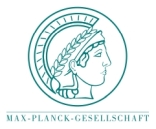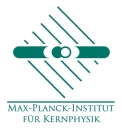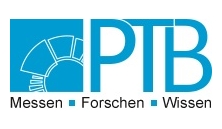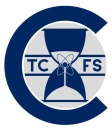Max Planck-RIKEN-PTB Center for
Time, Constants and Fundamental SymmetriesTh-229 nuclear clock
Involved senior scientists and institutions in alphabetical order:
J. R. Crespo ![]() ,
H. Katori,
E. Peik,
T. Pfeifer,
T. Udem –
MPIK,
MPQ,
PTB,
RIKEN
,
H. Katori,
E. Peik,
T. Pfeifer,
T. Udem –
MPIK,
MPQ,
PTB,
RIKEN
The isotope Th-229 is the only nucleus that is known to possess an excited state in the energy range of a few electron volts. This unique condition makes it possible to apply the precision methods of laser spectroscopy to a nuclear transition. Th-229 holds the promise to open an unexplored borderland between atomic and nuclear physics for experimental studies. A number of applications have already been proposed, most promising among them the optical nuclear clock that will benefit from the reduced sensitivity of the nucleus to external perturbations from electromagnetic fields. Two physical systems have been envisaged and are presently investigated in several groups world-wide: Laser-cooled trapped Th3+ ions will provide ideal isolation from perturbations and a highly precise clock. Th-doped crystals will make it possible to perform laser Mössbauer spectroscopy on a large ensemble of nuclei, providing a strong signal for a clock of high stability from a relatively simple reference system. The 229Th nuclear clock has been proposed as a particularly sensitive system to search for temporal variations of the fine structure constant α. This is based on a model where the small nuclear transition energy of ≈8 eV appears as the result of the nearly perfect cancellation of ≈1 MeV change in the Coulomb energy with opposite and nearly equal changes of the nuclear energy from the strong interaction. Such a cancellation would be very sensitive to the values of the coupling constants of the electromagnetic and strong forces. Even if this model is overly simplified, it appears likely that the α-sensitivity of the 229Th nuclear clock exceeds those of present atomic clocks by a several orders of magnitude. Together with the expected high accuracy of the nuclear clock, this will provide a chance to test predictions for temporal variations of coupling constants and to experimentally assess theories unifying gravity with other interactions. While experimental progress in the field has been slow for several years, hampered by difficulties associated with the radioactivity of 229Th, the lack of a suitable narrow-band VUV radiation source and unprecise data on the nuclear transition energy, recent progress in the determination of the nuclear properties obtained from 229Th recoil ions from 233U α-decay provides a strong impetus to the field.





